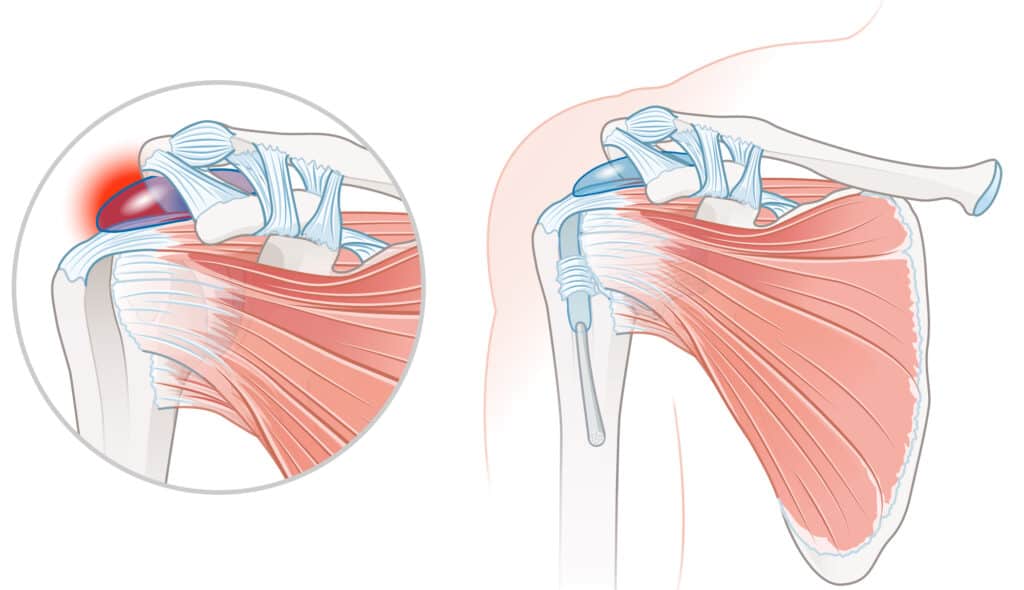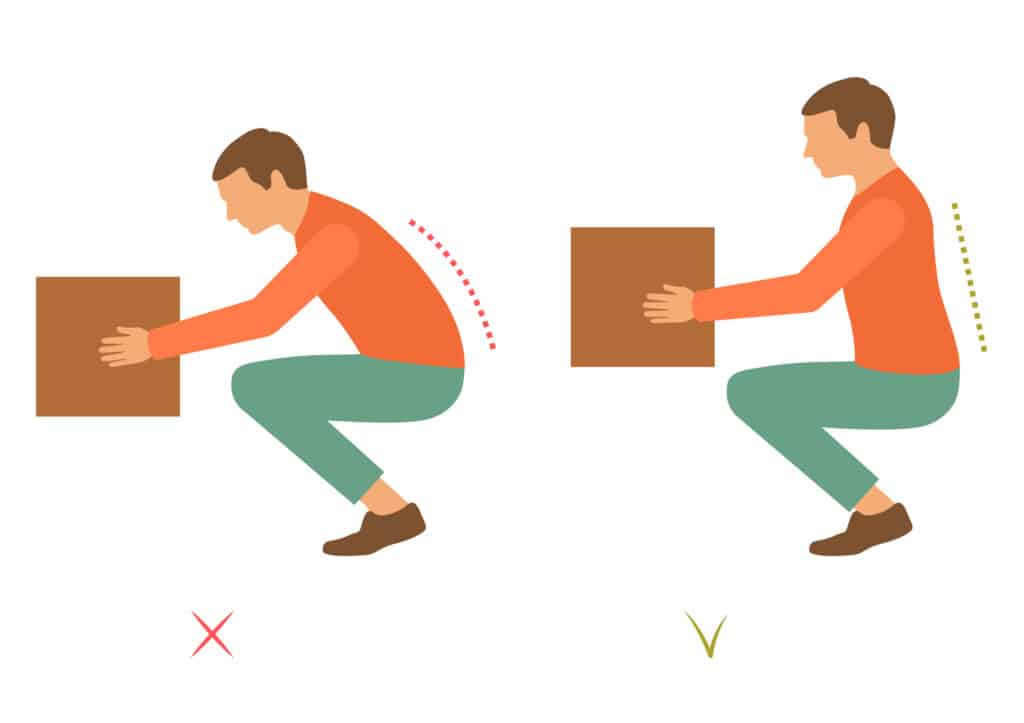
You should be aware of many types of shoulder injuries, from minor strains and pulled muscles to more serious conditions such as complete or partial dislocations and rotator cuff tears. Some of the most common causes of these shoulder issues include overuse, repetitive movements, trauma, and aging.
The shoulder is a fascinating joint (for us, anyway). The way we flippantly refer to the “shoulder” makes it seem simple in structure. But inside are several different bones, muscles, tendons, and ligaments, which all work together to allow for a wide range of movement.
As a result, the shoulder is the most flexible joint in the human body, which allows the arms to spin around completely and move in all different directions. We commonly refer to the shoulder as a joint, and it is, of course.
Still, the muscles, tendons, and ligaments give the shoulder its incredible range of movement. Unfortunately, however, this complex structure makes it more vulnerable to injury.
This blog describes some common shoulder injuries we see in the clinic and explains how we treat each one. It also includes tips on preventing shoulder injuries. But if you are unlucky enough to injure one of your shoulders or are in pain now, physical therapy is THE most effective way to fix it.
Whether it’s a rotator cuff tear, shoulder impingement syndrome, or another type of shoulder injury, we provide targeted exercises and treatments to help you regain your shoulder function and return to playing sports and doing everything you love.
More Blogs From Intecore
Things To Avoid With Cervical Spinal Stenosis
Do The Shoes You Wear For Running Actually Matter?
How To Treat Carpal Tunnel Syndrome
What Are Common Shoulder Injuries?
A tear in the infamous rotator cuff is one of the injuries we see most often that affects the shoulders. The rotator cuff is a “cuff” of muscles, tendons, and connective tissue that surrounds and stabilizes the shoulder joint.
A tear in this area can cause significant pain, muscle weakness, joint instability, and reduced range of motion. The treatment for a rotator cuff tear may include physical therapy, anti-inflammatory medication, and in severe cases, surgery.
Dislocation:
Another common shoulder injury is a shoulder dislocation, which occurs when your upper arm bone pops out of the shoulder socket. This injury is usually trauma-related, such as a fall or a sports injury like a collision or a competitor pulling your arm.
Most shoulder dislocations require immediate medical attention to have the joint “reduced” (put back into its proper position) to reduce the risk of further damage and complications.
The treatment for a dislocated shoulder may include immobilization with a sling, physical therapy, and in some cases, surgical repair.
This syndrome occurs when the muscles, tendons, or bones in the shoulder rub against each other when you move. It can cause pain, muscle weakness, and a limited range of movement in the arm and shoulder.
Physical therapy (the most effective treatment) for shoulder impingement can include stretching and strengthening exercises and techniques to improve posture and body mechanics. These exercises also help to alleviate pain and improve shoulder mobility.
Overuse injuries like tendinitis are common in professional athletes and people who regularly perform repetitive movements at work. These types of shoulder injuries develop due to inflammation and irritation in the tendons, which can cause pain, rigid muscles, and an inability to move the shoulder freely.
Physical therapy and lifestyle modification is the best way to treat tendinitis.
Can I Fix My Shoulder Injury At Home?
The short answer is no. We always strongly suggest that you seek help from a physical therapist if you have any pain that continues for more than seven days to prevent further damage. However, the longer answer is that there are some things you can do when you’re at home to aid your recovery (in combination with physical therapy).
In fact, one of the most powerful things you can do to help fix your shoulder injury is to play an active role in your recovery and rehabilitation.
This participatory role includes following your physical therapists’ recommendations for changes you can make to your lifestyle to prevent further damage – like improving your posture, using proper technique when lifting or carrying heavy objects, and completing the rehabilitation and strengthening exercises we teach you to do at home and in the gym.
We know that strengthening the muscles around the shoulder joint is one of the best ways to reduce and prevent shoulder pain. Unfortunately, we can only do so much in physical therapy sessions. Hence, the more you do outside your regular sessions, the faster your recovery will likely be.
But don’t go crazy because that can cause many problems and serious injuries.
To help ease your pain in between physical therapy sessions, when you’re at home, try using heat or ice to reduce the pain and facilitate healing. For example, ice helps reduce inflammation and swelling, while heat helps increase circulation to promote healing. But take your physical therapist’s advice on this. It may not be suitable for your specific type of injury.
Overall, fixing shoulder injuries requires a proactive and collaborative approach, with the support of your physical therapist and your commitment to your recovery.
How To Fix Shoulder Injuries With Physical Therapy
Physical therapy is arguably one of the most effective treatment methods for fixing shoulder injuries. We provide exercises specific to your injury, helping you regain strength and mobility.
We also include manual therapies in our sessions, like soft tissue mobilization, that help break up restrictions and scar tissue in your fascia (connective tissue) and promote healing. But the first step in fixing a shoulder injury is to identify the specific type of injury you have by finding the root cause, which is what we specialize in at Intecore Physical Therapy.
Shoulder injuries vary in type and severity, and understanding your injury helps us decide the most effective treatment approach for you. So, before we devise a treatment plan, we diagnose the injury. Is it bursitis, tendonitis, a rotator cuff injury, or something else?
Then, we also determine the cause. Is it overuse, poor posture, sudden trauma – like a fall or other impact, or something else?
Once we identify the type of shoulder injury and determine the root cause, we develop a therapy plan customized to your needs and specific symptoms, which are different for everyone, even if the injury is the same.
For example, your treatment plan may focus on exercises to address the range of motion. In comparison, others may need more of a focus on building strength.
It’s important to note that physical therapy is not a quick fix for shoulder injuries. It takes patience, time, and consistency to see positive results.
However, with dedication and the support of a skilled physical therapist, you can expect to experience a significant improvement in your shoulder function and a marked reduction in pain quite quickly with our guidance.
How To Prevent Shoulder Injuries
Developing good habits for shoulder health, including noticing and correcting your poor posture and using safe lifting techniques when carrying heavy objects at work and home, can help prevent shoulder injuries in the future.
Remember, the key to avoiding severe damage, arthritis in the shoulder joint, and surgery to fix ongoing issues is to seek help from a physical therapist at the first sign of problems. Please don’t put it off because things can and do get worse.
Preventing shoulder injuries is even more essential if you’re an athlete or someone who regularly performs heavy lifting or repetitive movements at work because you want to retain good strength and protect your shoulder health and mobility to stay at the top of your game in the office or on the field.
Always warm up before strenuous activities, use proper technique, and bend at the knees when lifting heavy objects or performing sports that require arm strength.
But shoulder injuries can be a major hurdle for anyone, whether you’re an athlete or simply someone who wants to live pain-free. So, these preventative steps apply to everyone because when things go wrong with your shoulders, it can limit your ability to do the most basic tasks, like lifting your bag or getting dressed.
If you’re worried about shoulder pain, give us a call or complete the form to claim your free 30-minute consultation with a physical therapist at the clinic.
- 3 Things Aggravate Knee Pain After Biking and How to Ease It - April 14, 2024
- Runners Knee Stretches: Top 5 Stretches Every Runner Needs to Know - April 7, 2024
- What Causes Pain Between Shoulder Blades? - March 31, 2024


















